On Tuesday of week 7 rooms 17, 19, 20, 25, 27, 28 & 29 were treated to a forensic science incursion organised by Ms Gregory. Forensic science is a type of science that involves looking for clues at a crime such as a murder or a robbery. This was a different experience for the students and they really enjoyed it. The session was focused on a fictional case about a man who was assaulted and robbed. This activity encouraged students to investigate, make predictions and come to evidence-based conclusions.
We learnt how to use microscopes; we learnt that everyone has a different DNA; we learnt that DNA stands for ‘deoxyribonucleic acid’, and we learnt that everyone has a different fingerprint.
Fingerprints
At the fingerprint station, the students were provided with ink pots and paper to imprint their fingerprints. On the information board, there was a description of each fingerprint’s features, and how everyone’s fingerprints are different.
Ultraviolet light/ invisible ink
At another station, a gazebo was set up, and ultra-violet lights were available to view invisible ink on the evidence from the case. This was quite an exciting activity for the students, as they searched around with torches. If you looked really carefully at all the items you could find the victims age, initials, and date of birth.
Microscope
At the microscope station, there were 3 microscopes. There were lots of items and you would look at them closely, once again, you could find the victims age, initials, and date of birth.
Poison
At the poison station, we had to find out what poison had been injected into the victim. We put a paper swab into 4 different sponges and whatever one turned red was the venom that was injected.
Coin/ Metal Rubbings
At the coin rubbing station, students rubbed a crayon on a piece of paper pressed on to a metal coin. This showed a rubbing of the coin on the paper. This gave the students a source of evidence in the case.
DNA
At the DNA station, we had to put together cut up pool noodles so they fitted, and then whichever ones where upright were correct. It was designed to tell us if the suspect’s hair was dark or light or if their eye colour was blue or brown.
Chalk traced body
There was a ‘chalk’ traced body which showed us which were the dominant hands of the victims and the suspects’. It also showed what position the victim was after he was knocked unconscious.
We are very thankful to have had the opportunity to do this and learnt a lot. We thank Ms Gregory for arranging this fun experience.
Written by Georgia and Jessica C from Room 19


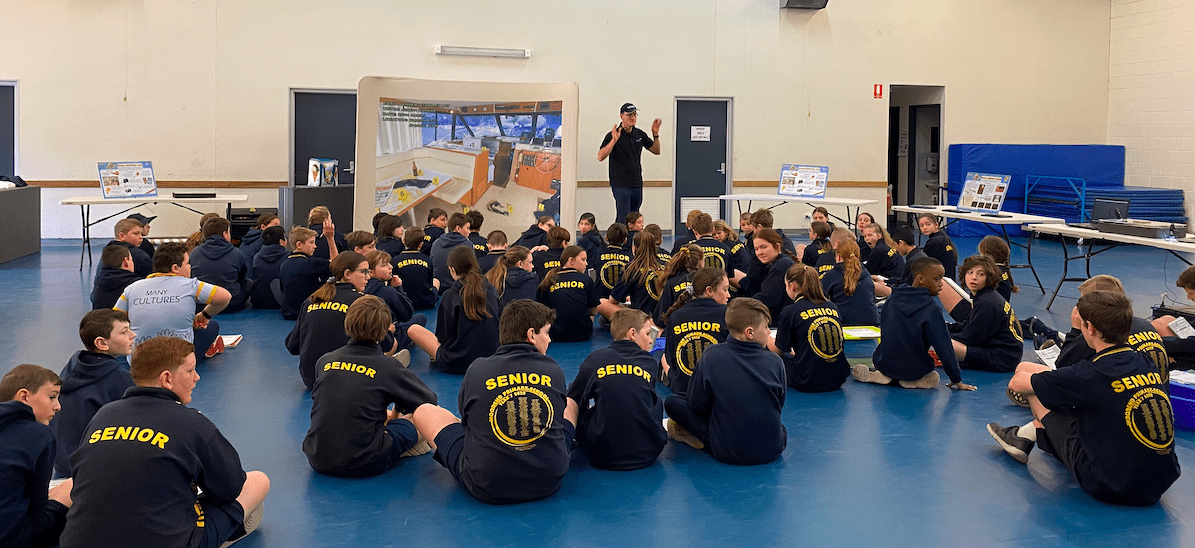
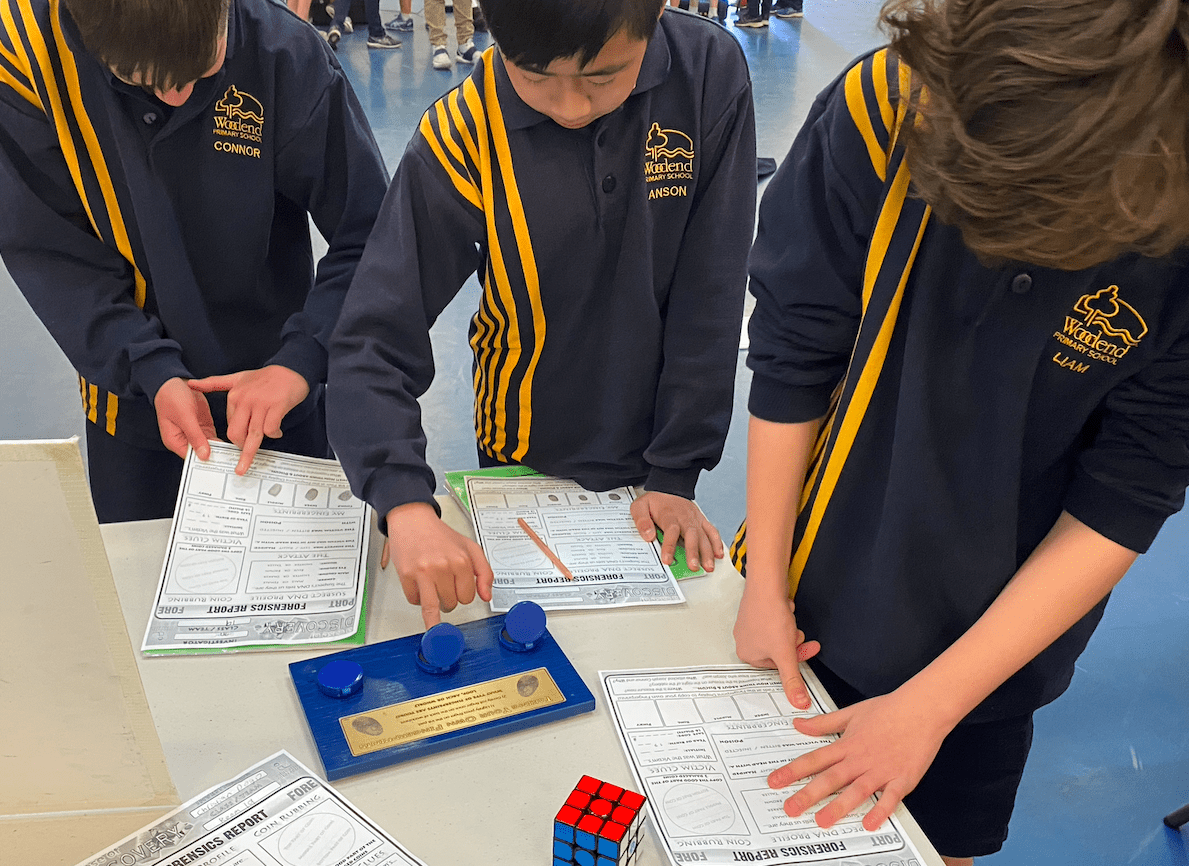
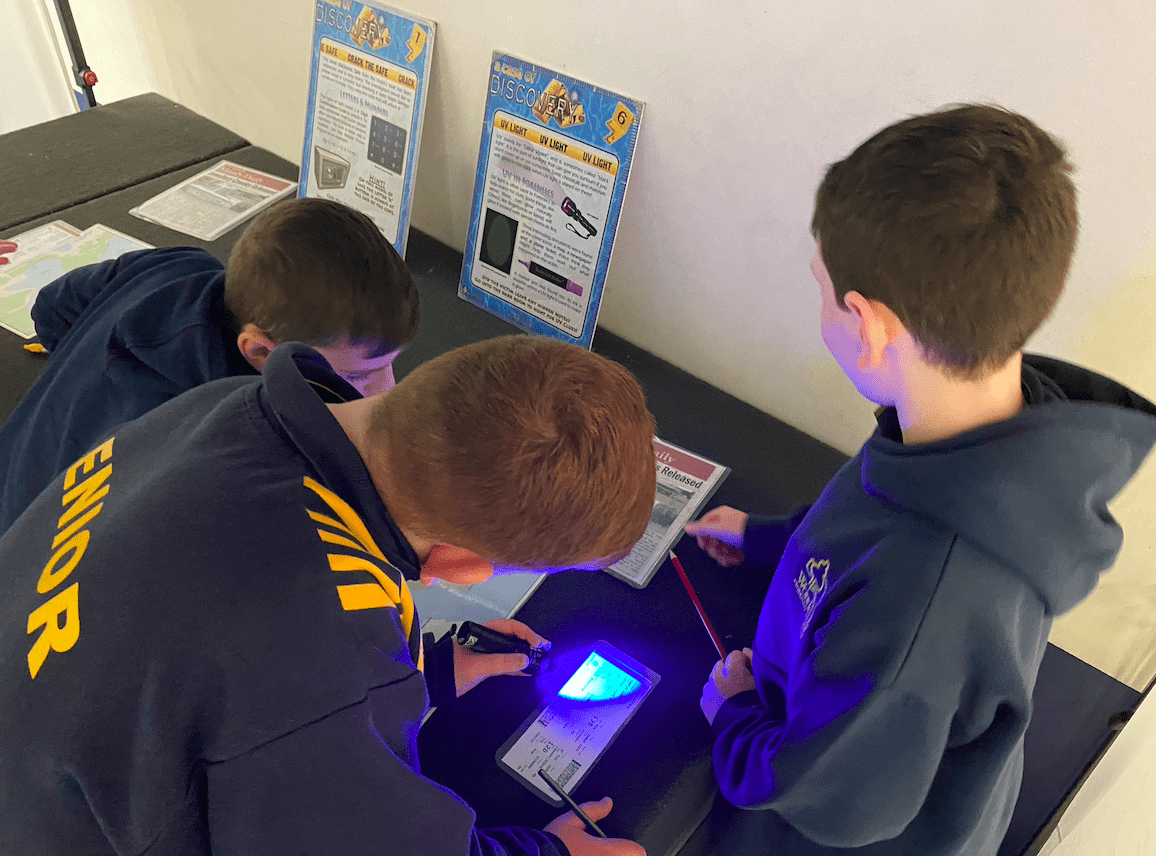
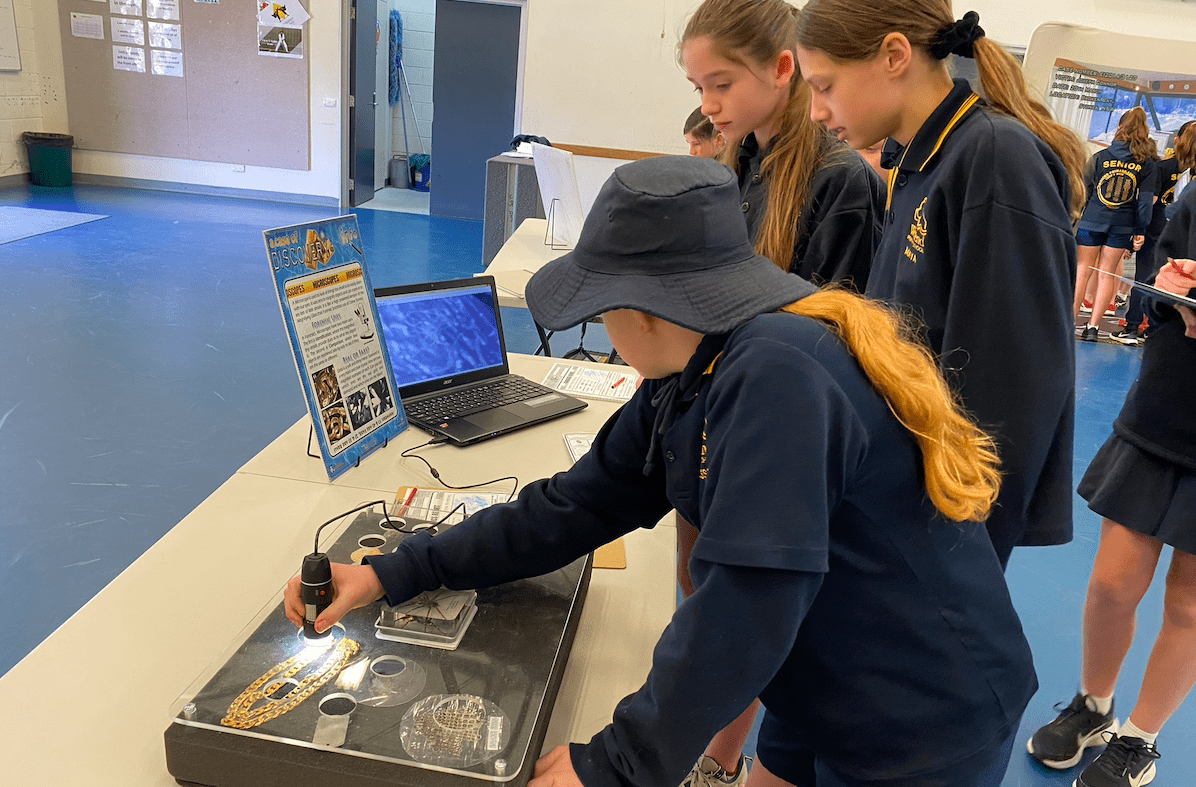
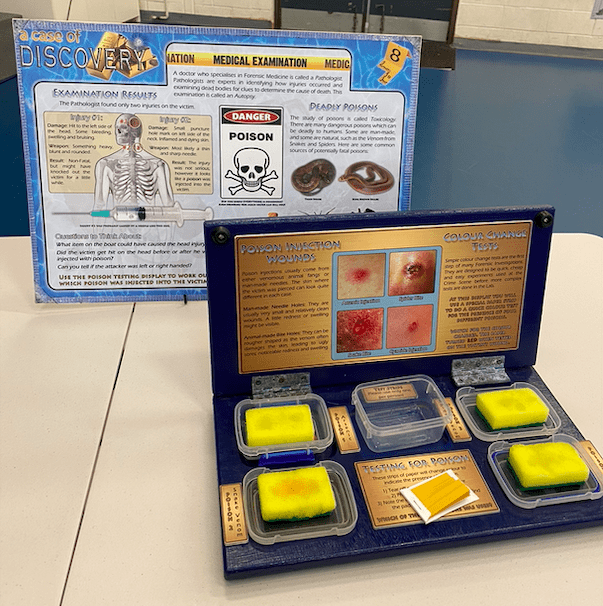
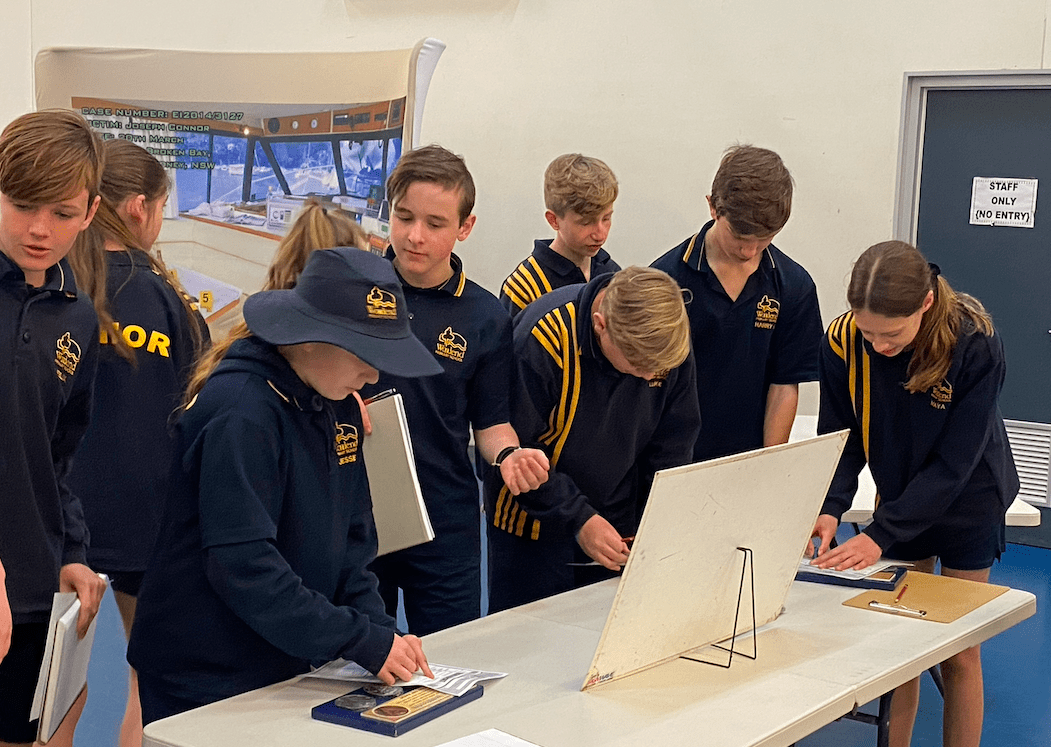
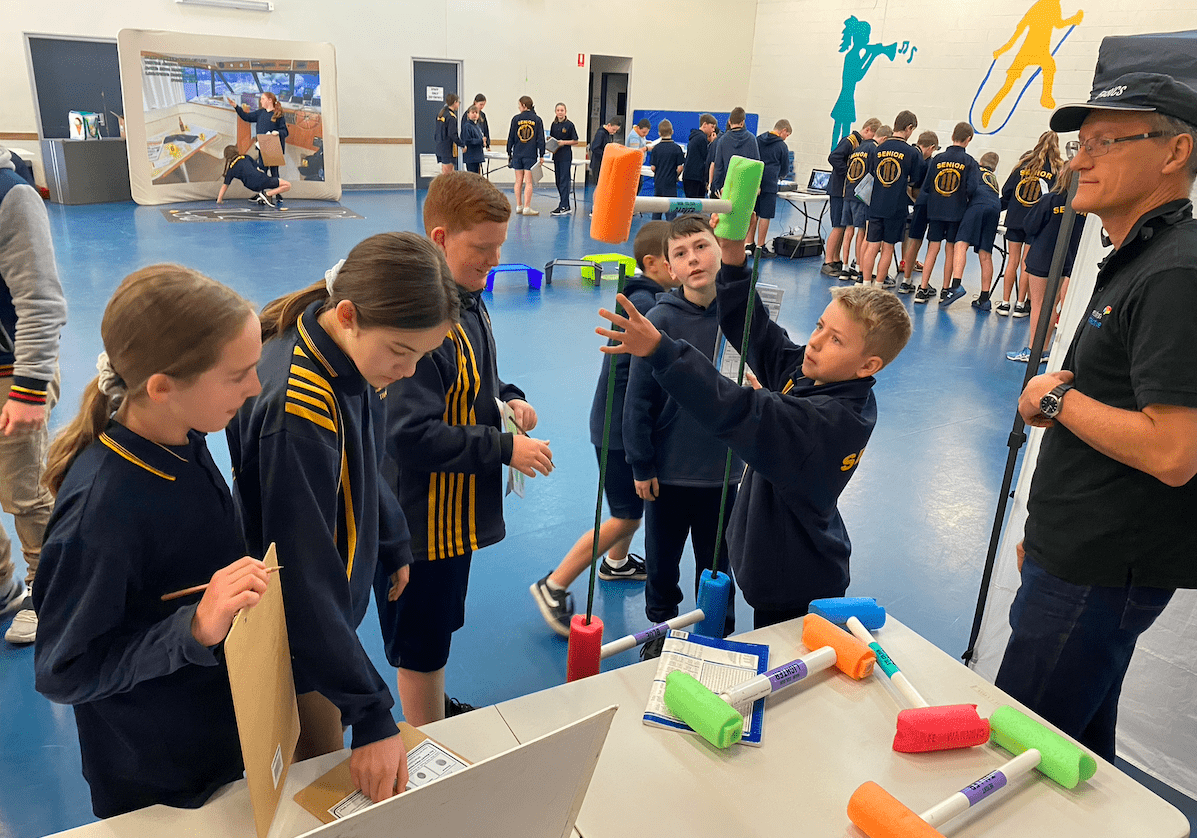

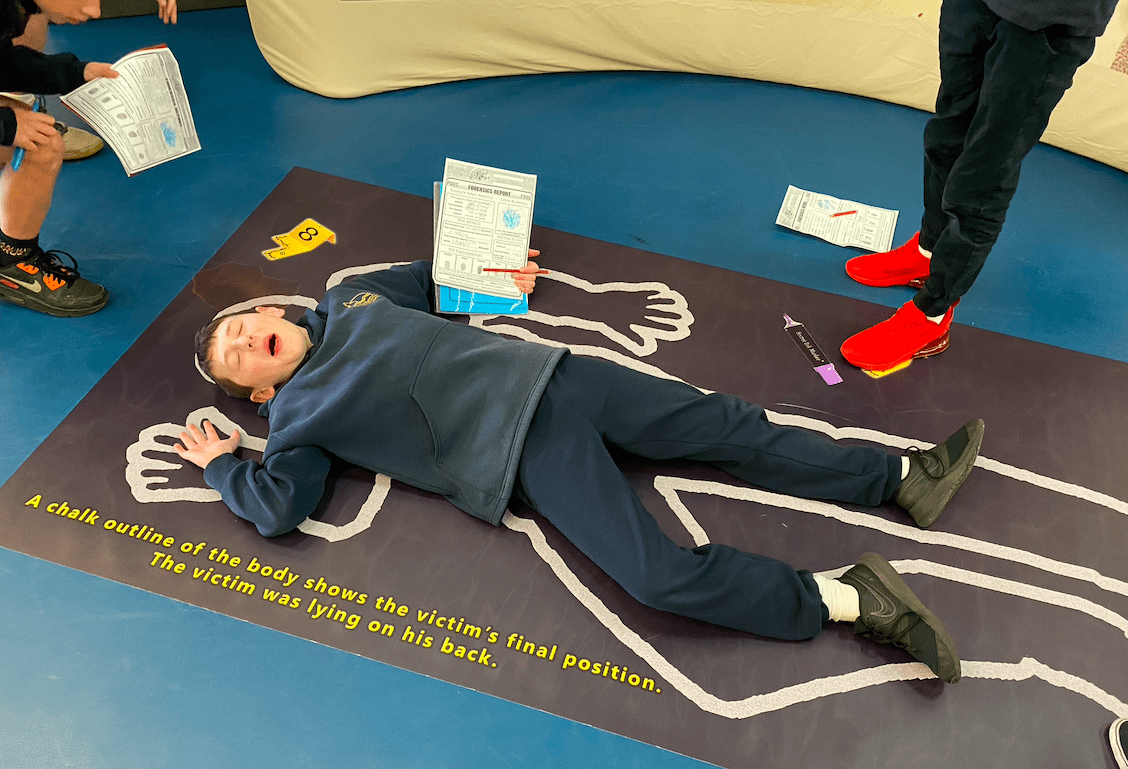
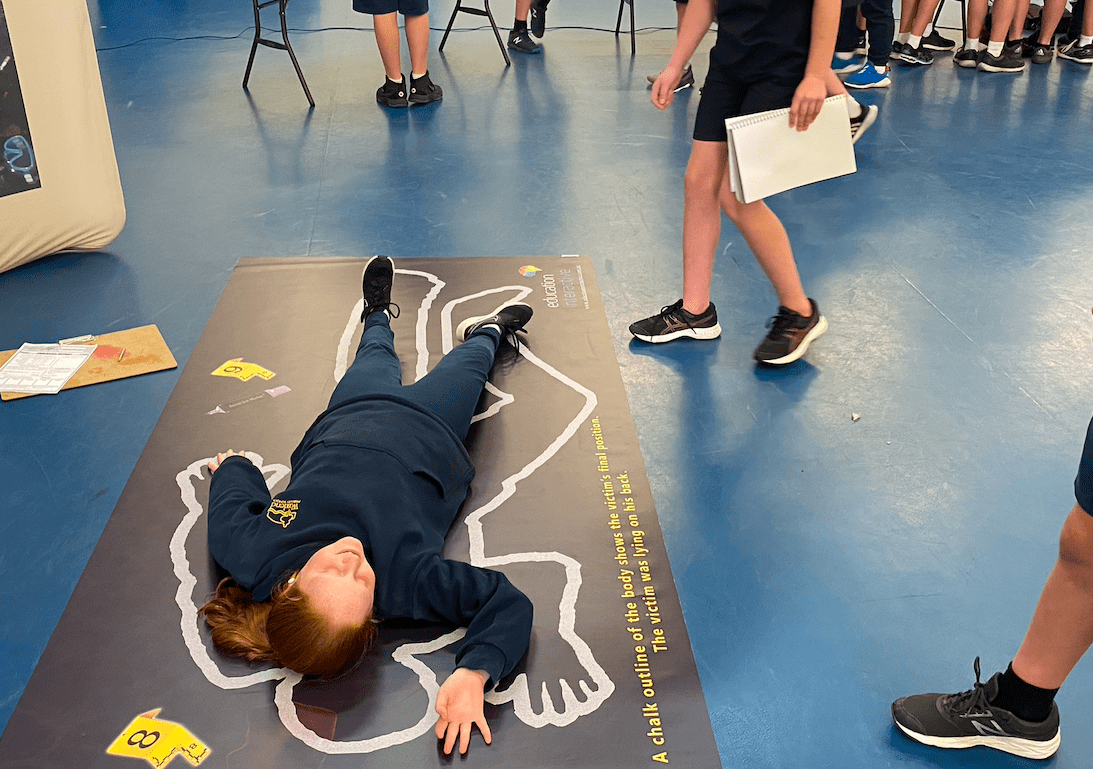
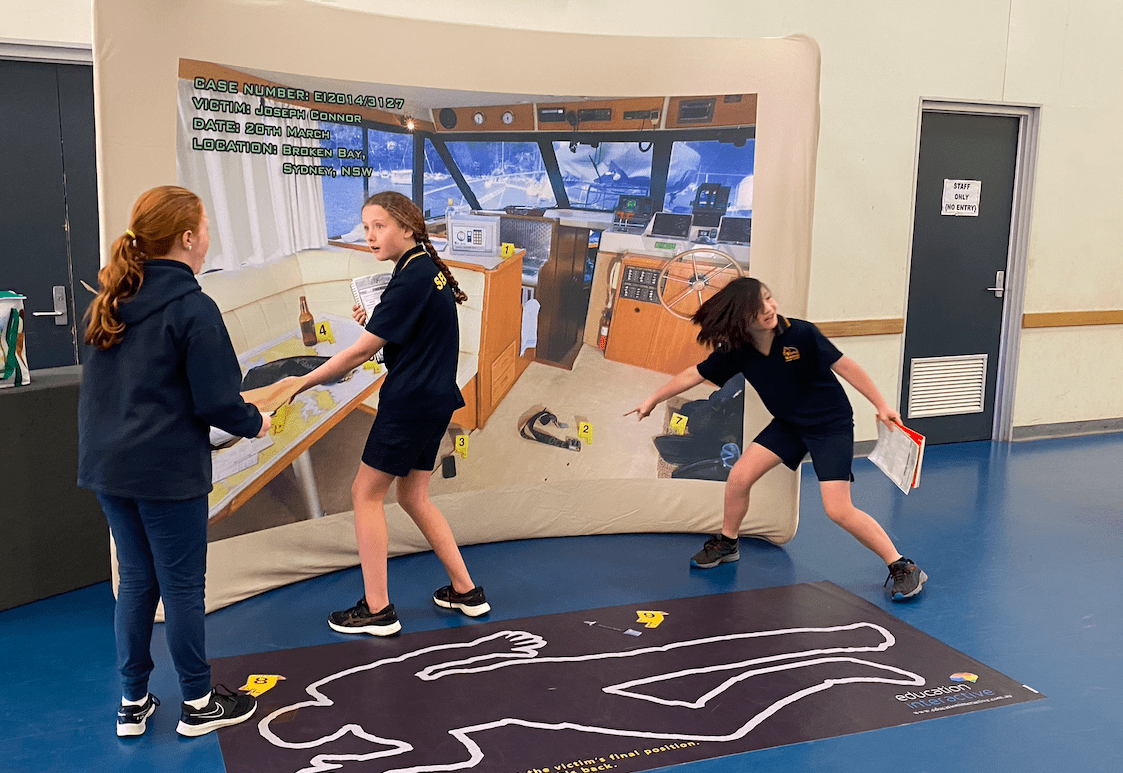
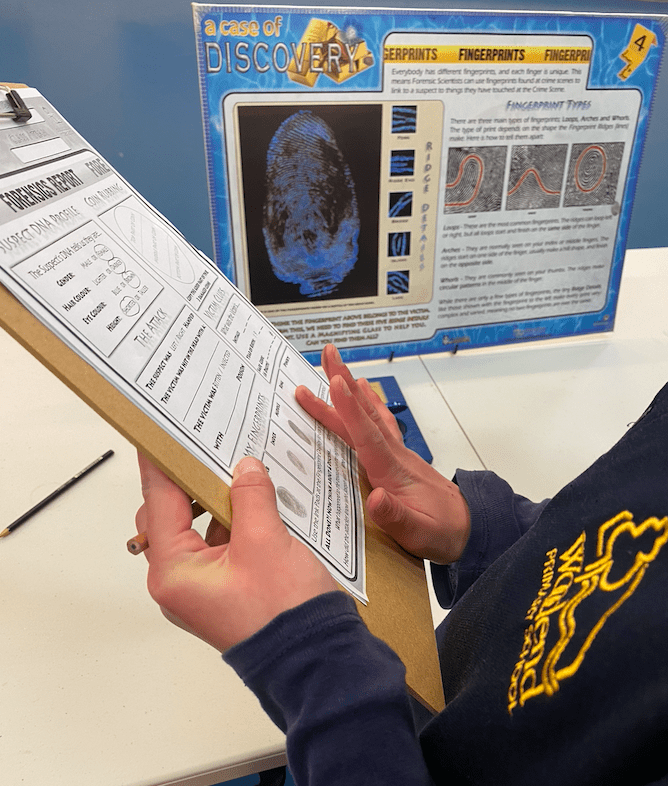
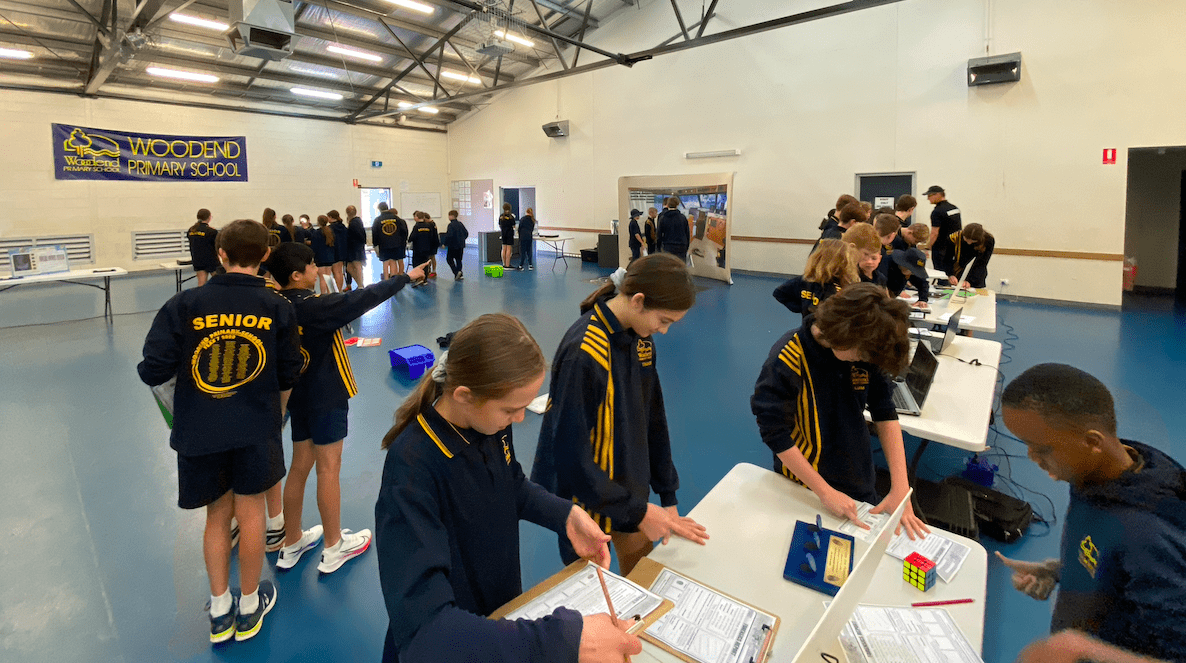


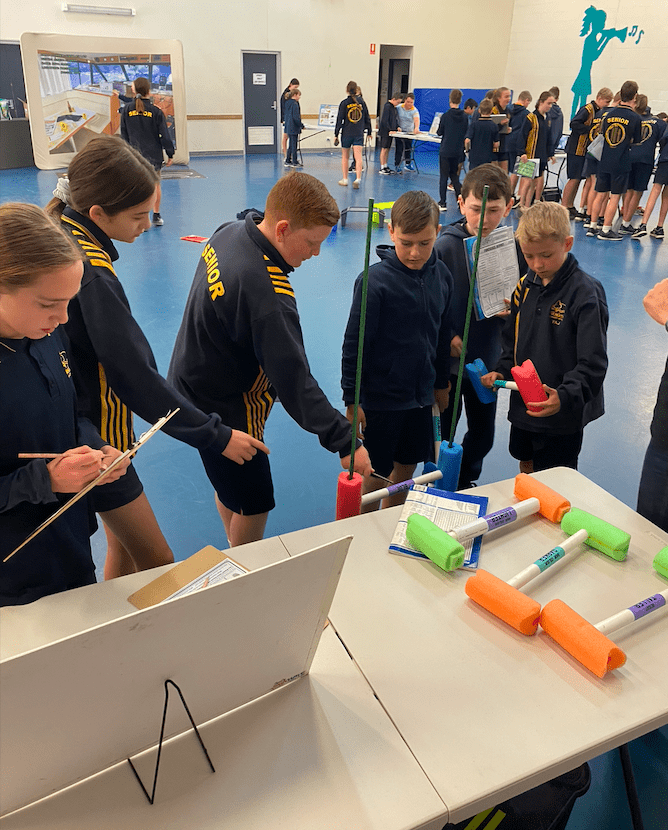



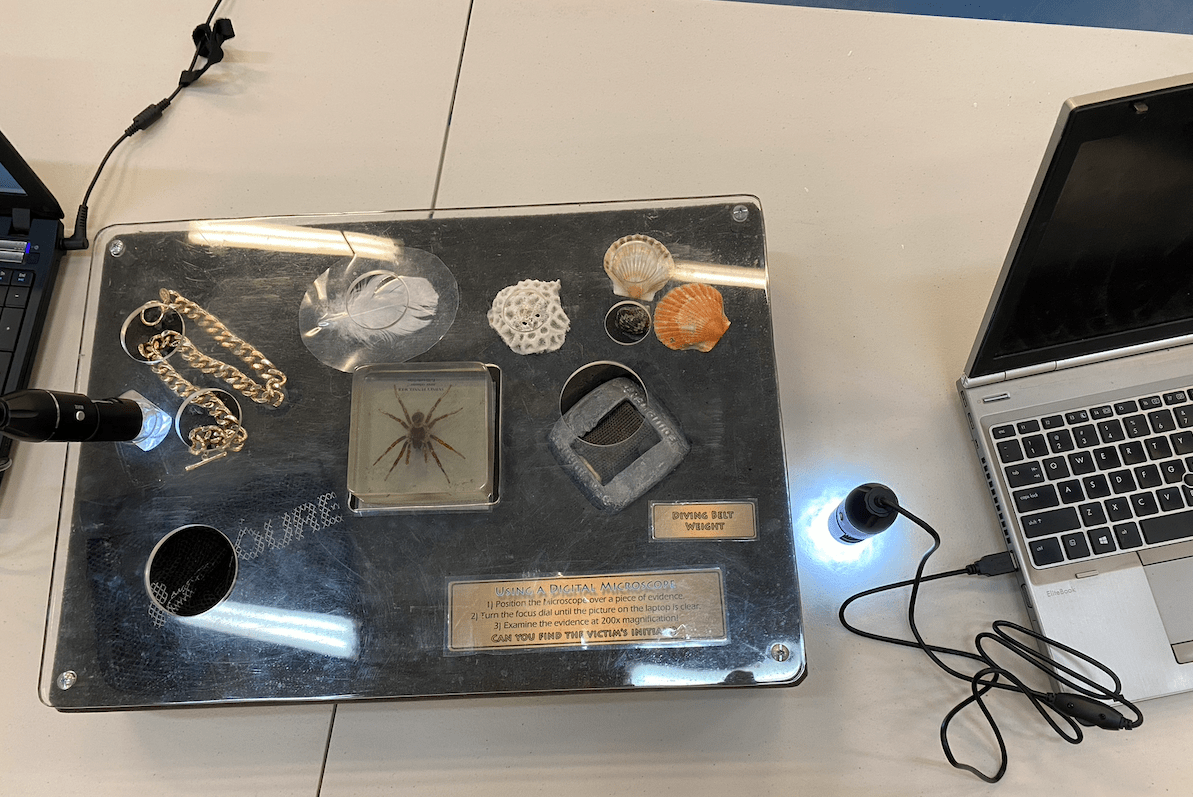
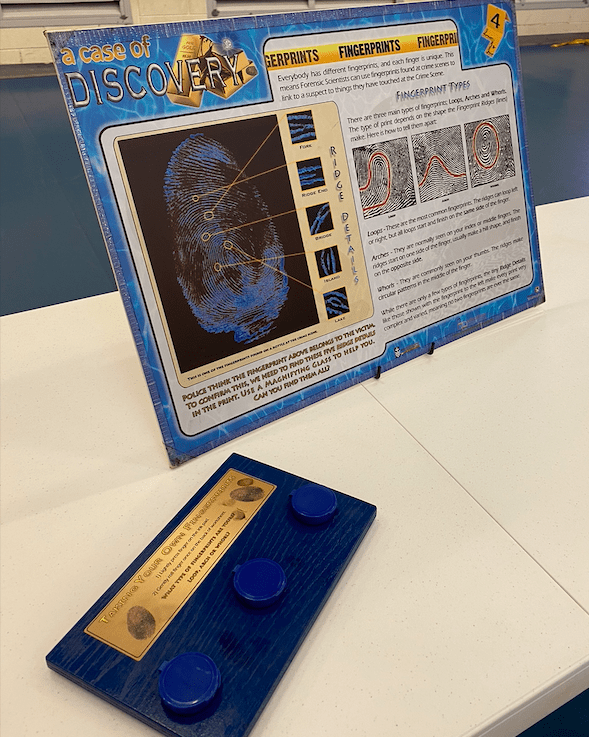

Leave a Reply